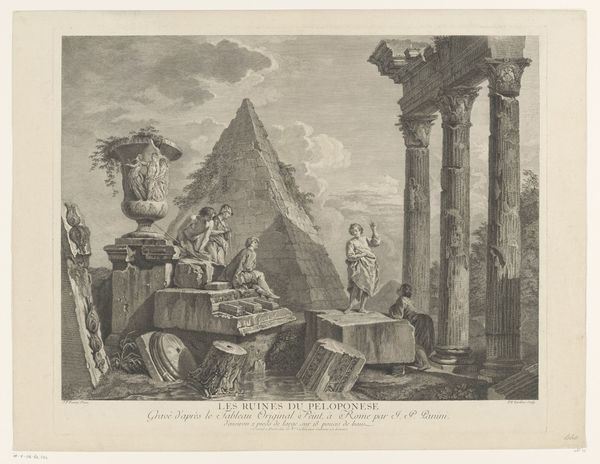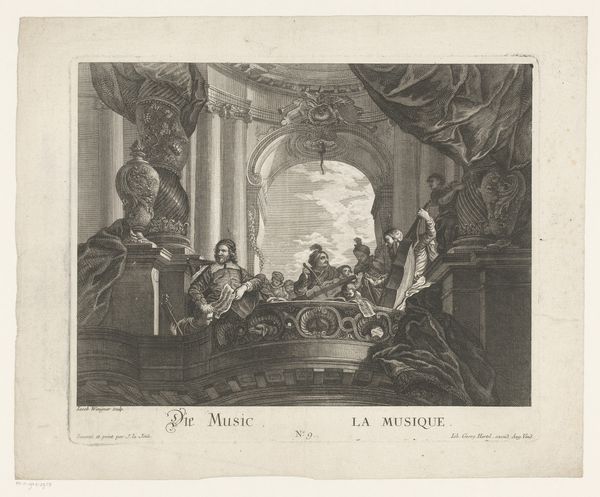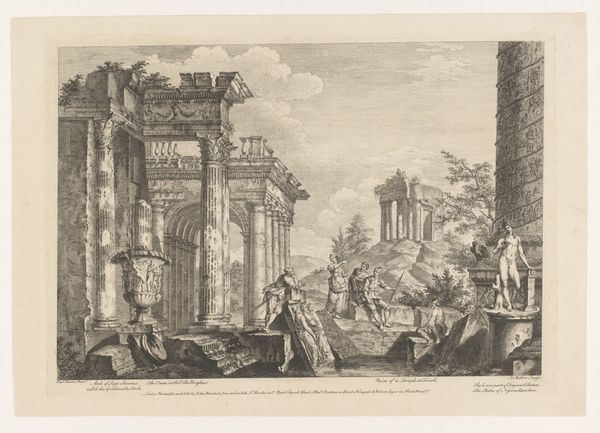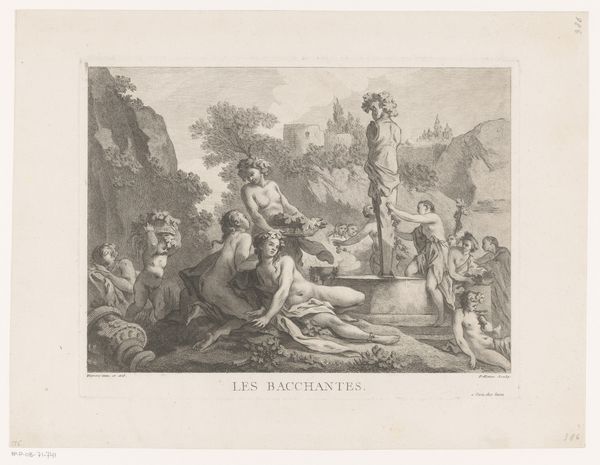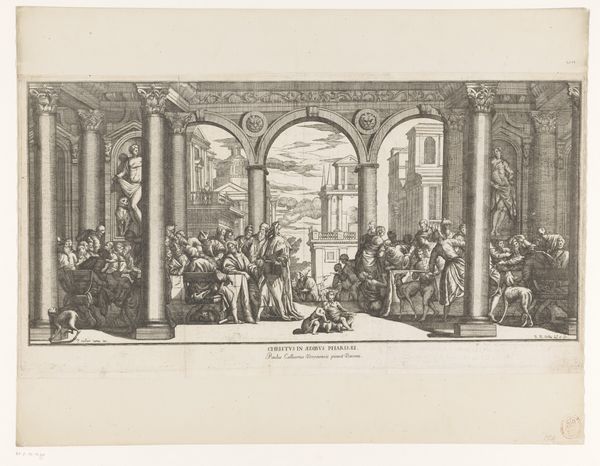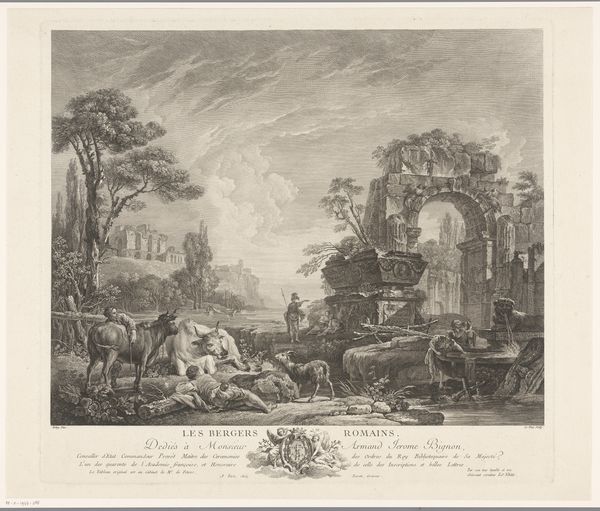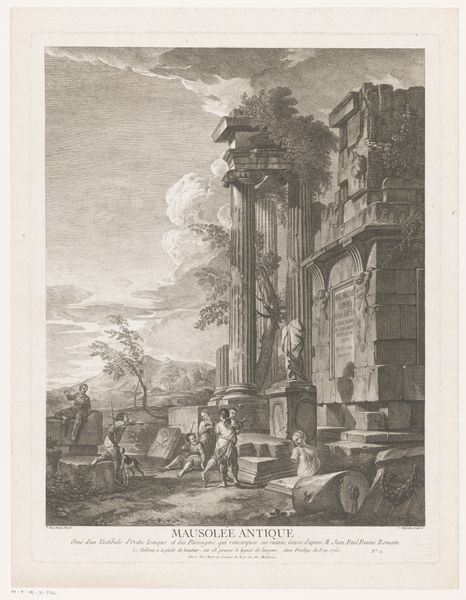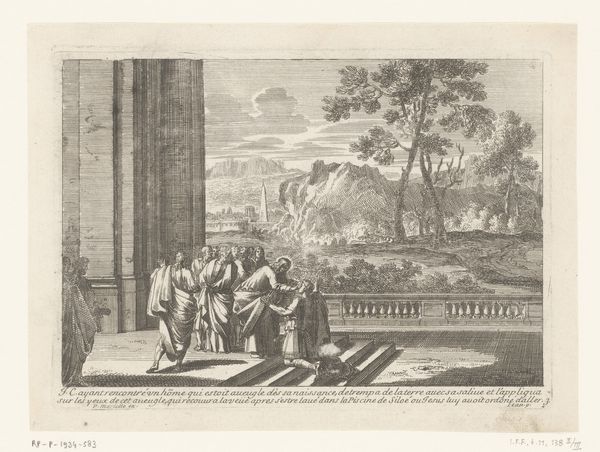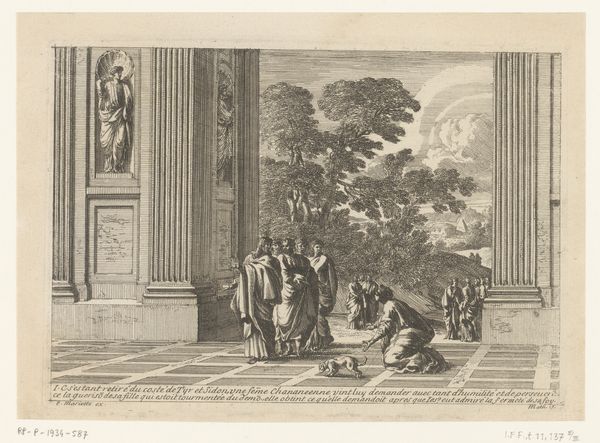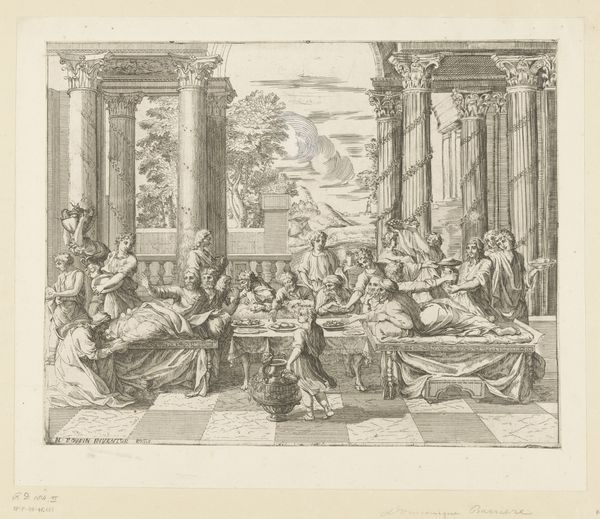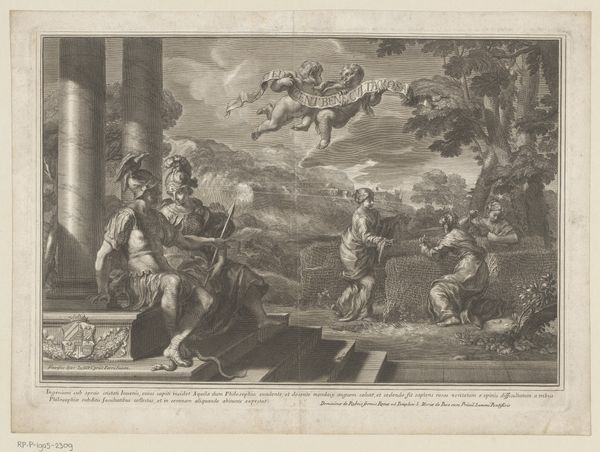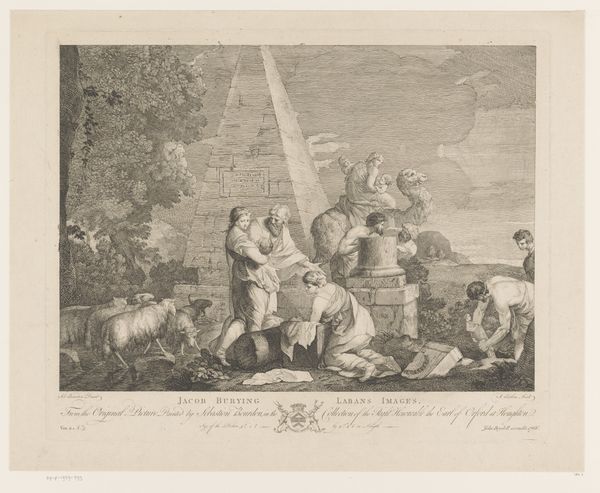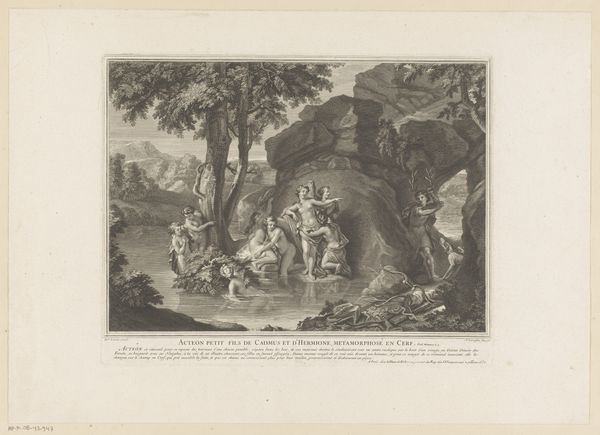
print, etching, engraving, architecture
#
pencil drawn
#
neoclacissism
#
narrative-art
# print
#
etching
#
landscape
#
history-painting
#
academic-art
#
engraving
#
architecture
Dimensions: height 324 mm, width 384 mm
Copyright: Rijks Museum: Open Domain
Editor: Here we have "Acht mannen en vrouwen rustend tussen ruïnes," or "Eight Men and Women Resting Among Ruins," an etching by Cathérine Élise Cousinet from 1762. It depicts figures amongst classical ruins. I find the scene melancholic, a poignant meditation on time and decay. What symbols jump out at you? Curator: The ruins themselves are potent symbols of lost glory, a theme deeply resonant in the Neoclassical period. Consider the idealized figures juxtaposed against the crumbling architecture. Do you think this contrast underscores a particular sentiment? Editor: Perhaps the fleeting nature of human existence against the backdrop of enduring, yet decaying, human achievements? Curator: Precisely. The ruined columns are echoes of a powerful past, but their fractured state prompts us to contemplate mutability. And what about the figures? Their gestures, their groupings...what stories do they evoke? Look closely at the woman gesturing outward. Editor: She seems to be directing attention, perhaps recounting tales of the past glory that once existed there? A cultural memory being passed down. Curator: A wonderful interpretation! Notice, too, how the artist uses light and shadow to emphasize certain forms, drawing our eyes to specific areas within the ruin. Light as revelation, decay as inevitable. What remains resonates. Editor: I never considered how the print itself carries so many layers of symbolism relating to cultural memory. I see much more in this piece now than I initially realized. Curator: Indeed. Each element carries cultural and historical weight, inviting us to reflect on themes of time, memory, and the enduring human spirit.
Comments
No comments
Be the first to comment and join the conversation on the ultimate creative platform.
